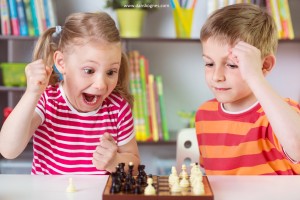The Science of Play
 “Play is often talked about as if it were a relief from serious learning. But for children, play is serious learning. Play is really the work of childhood.” Fred Rogers.
“Play is often talked about as if it were a relief from serious learning. But for children, play is serious learning. Play is really the work of childhood.” Fred Rogers.
As a teacher I love to watch kids play. They want to know what the rules of the game are and EVERYONE has to play by the rules. They love it when they win and you see their eyes dance when they get the right answer. “Yes!” they exclaim, and they high-five one another.
When you teach kids, you are missing out if you don’t incorporate play into your activities. This can be done with any subject and any age. It trains their minds to think strategically, collaboratively, and competitively. It teaches them valuable social skills that they will use all their lives. You don’t have to have a lot of props either. A white board and erasable marker will do.
By the way, kids LOVE using the erasable markers. I remember the first time I was teaching and I saw kids writing gleefully on their desks with markers. I freaked out! I thought they were permanent markers and they were ruining the desks. The kid I scolded looked at me with a puzzled look and then just removed the marks with the wipe of her hand. I laughed and realized there was a lot that had changed since I was in school. I apologized and gave her another marker.
I used Hangman the other day to teach kids some new words. They loved it. I have seen various games used in classrooms….Jeopardy, Password, Wheel of Fortune, and Flash Cards to name a few. You can get elaborate or just keep it simple, but use playtime to teach. The kids will enjoy it and you will be a lot less stressed as the kids are actually engaged instead of picking on one another. They will also help you keep everyone engaged when you tell them that they all have to participate or NOBODY gets to play.
Get creative and have some fun in your class. Let me know what games you use to teach your kids. A child learns best when they are allowed to be themselves and when the learning environment is appropriately stimulating their senses. You engage their mind when you engage their imagination.
Shalom!
Dan Skognes